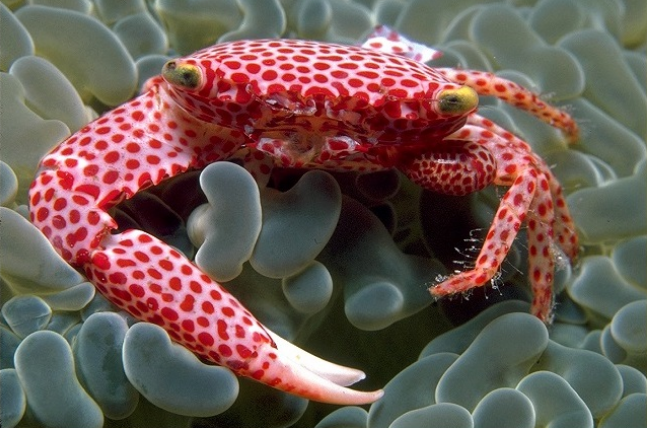
deviantart.com
While we human animals continue to go to hell in a handbasket (between the Ebola epidemic, the Aral Sea drying up and the persistence of ISIS, it seems our days just might be numbered), some creatures on the lower rungs of the food chain are trying to fight the good fight, too.
Starting around 2008, Akanthaster sea stars, aka crown-of-thorn sea stars—which grow to the size of trash-can lids, I mean what. the. hell.—experienced a population boom on Moorea in French Polynesia. The influx of these giant corallivores began threatening the entire reef community because, essentially, they chomp up coral like a stoned kid with pork rinds.
Basically they invert their stomach, drape it over an unsuspecting coral and secrete digestive enzymes all over it, which dissolves the coral tissue and is than absorbed into their greedy stomachs. A single female can produce up to 100 million eggs a year, so you can imagine the fear and mayhem that was rippling through the coral community as the sea stars spread like a ravenous plague.
In principle, all things operate in balance, but the sea stars had vastly—dangerously—tipped the ecosystem, with the outbreak reducing the live coral cover on the reef to less than 4%.
"Bastards!" the coral cried. "What on earth can we do?! Who will come to our aid?!"
Coral guard-crabs, of course.
Guard-Crabs To The Rescue
In a tale of astounding symbiosis, coral guard-crabs defend their home and habitat inside coral reefs by attacking the sea stars seeking to eat up their domicile. The coral not only allows the crabs to call their nooks and crannies home, but they also provide fatty deposits in their tips that the crabs can snip out and eat. The crabs are like, "Hey, you give me food and shelter, roughing up some sea stars is the least we can do."
To get to the bottom of the coral destruction, Smithsonian scientists studied four species of coral guard-crabs during a long series of experiments to see who waged the best war against the insatiable sea stars. Their work was just published in PeerJ this week.
“Seemingly small differences among crabs guarding their coral homes can have big effects on coral survival. Not only does the level of protection provided vary by species, but the smallest crabs were defending the coral from coral-eating snails, a threat that larger crabs ignored.” — Jenna Moore, Smithsonian museum’s predoctoral fellow
To further explore the fundamental symbiotic relationship between these crabs and the corals they defend, the scientists began introducing and eliminating certain guards to see what would happen; while the crab-coral symbiosis was a well-known occurrence, the vital importance of the crabs' presence had been chronically underestimated and overlooked.
Moore and her colleagues removed the largest species of coral guard-crab—say hello to T. flavopunctata—from 45 Pocillopora coral colonies in the warpath of the sea star outbreak during 2008 and 2009. Corals sans the big T. (even corals that housed other species of guard-crabs) were eaten overnight in 64% of the colonies. As a comparison, only 18% of those corals left with the big T. were devoured.
But before you go and say, "What the hell do I care about a bunch of coral reefs? I got a host of first-world problems, and that ain't one of them," you better check yourself.
Coral reefs are not only an essential source of food for human bellies around the globe—providing a habitat for as much as one-quarter of all ocean species—they also act as barriers against storms, erosion and wave damage. We're a water planet, bitches, and we need these reefs to stay healthy.
Or, to quote the eloquent scientists behind the guard-crab experiment:
“It is an example of how biodiversity is crucial to conserving reef environments and the essential resources they provide for thousands of species, including humans.”
